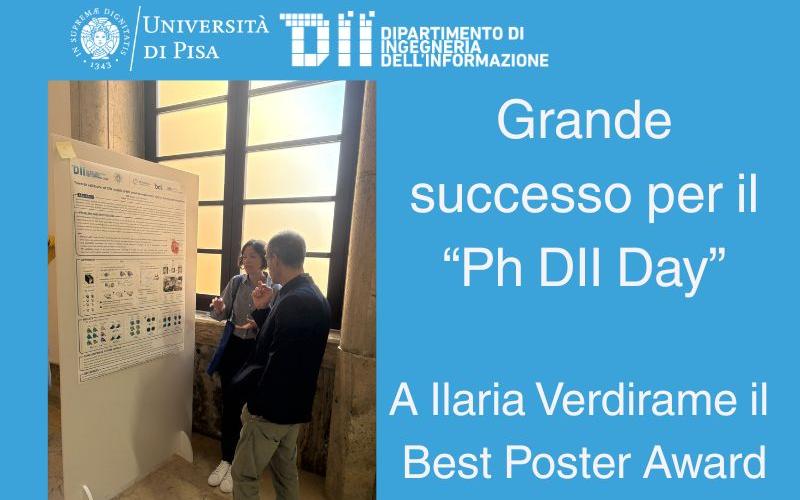gli sudenti del primo anno di dottorato hanno presentato le proprie ricerche in una poster session, in una giornata introdotta dalla presentazione di sette aziende nate da ricercatori e ricercatrici...
Leggi tuttoPhD Course: Numerical methods and Simulation Techniques for RF System Design

Hours:
16 hours (4 credits)
Room:
Aula Riunioni del Dipartimento di Ingegneria dell’Informazione, Via G. Caruso 16, Pisa - Ground Floor
To register to the course, click here
Short Abstract:
Today, the use of simulation software is essential for the design of Radio Frequency systems. Year after year, these commercial software are becoming more and more powerful in terms of calculation time, enabling ever more advanced structures to be simulated. Although they all aim to solve the same equations (Maxwell's equations), they are based on different numerical methods, each with its own advantages and disadvantages. The main objective of this course is to understand how these different methods can impact the use of these commercial software. A practical implementation through a labwork will give a precise example of how to implement one of these methods to simulate an antenna with Matlab.
Course Contents in brief:
0. Introduction : EM Simulators
0.1 Practical implementation of theoretical aspects
0.2 Numerical methods / simulators
0.3 Simulators: within the reach of every user?
1. Formulations of a problem – introduction to the main numerical method used in RF
1.1 Homogeneous wave equation
1.2 Integral equation
1.3 Variational approach
1.4 Semi-analytical approaches
1.5 Operators approximation
1.6 Solution domain
2. Numerical methods
2.1 Method of Moments (MoM)
2.2 Finite Difference (FD)
2.3 Basics of the Finite Element Method (FEM)
Schedule:
- Day 1: 2/7/2024, from 9:00 to 13:00 (4 hours)
- Day 2: 3/7/2024, from 9:00 to 13:00 (4 hours)
- Day 3: 4/7/2024, from 9:00 to 13:00 (4 hours)
- Day 4: 5/7/2024, from 9:00 to 13:00 (4 hours)



